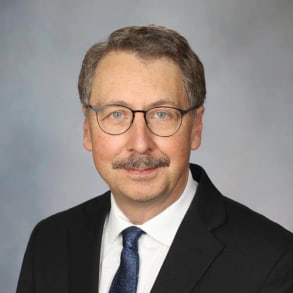[MUSIC PLAYING]
ROBERT BROWN JR.: We have techniques available now for brain aneurysms that we could have only dreamed of 30 years ago. In the United States alone, about 6 million people have a brain aneurysm, most of whom live their life and never become aware that they have a brain aneurysm.
[MUSIC PLAYING]
A brain aneurysm is a little saccular out-pouching sometimes called a berry aneurysm.
PAUL LINDELL: The consequences is that it is possible that they can rupture. What we do is we image using CT, MR, and angiography. And using one of those, we evaluate the blood vessels.
[MUSIC PLAYING]
ROBERT BROWN JR.: The question when we make a diagnosis of a brain aneurysm that has not ruptured is, what do we do about it? Can it safely be left alone?
HARRY CLOFT: On the diagnostic side, I think we can image better than we ever could. So we can see all the nuances that could guide us to a better therapy. And then, the therapies are getting better by leaps and bounds.
[MUSIC PLAYING]
GIUSEPPE LANZINO: Many of these problems can be effectively dealt with by going through the blood vessels without the need to expose the brain or the spinal cord.
ROBERT BROWN JR.: The endovascular techniques continue to evolve, treating the aneurysm from within via a little plastic catheter that's put in a groin artery advanced all the way up into the aneurysm. And there continue to be new and evolving techniques, some of which have originated in terms of some of the basic research here at Mayo Clinic.
HARRY CLOFT: A major advance that has really impressed me is flow diversion for the treatment of cerebral aneurysms. Those are stents, which are a mesh tube that diverts the flow along the length of the tube in and out of the aneurysm. And then, the aneurysm goes away gradually over time. And that has really made a lot of aneurysms that were quite difficult to treat quite easy to treat now.
GIUSEPPE LANZINO: There is no question that the safety and the success rate of our procedures on both sides, endovascular and of open surgery, has increased dramatically.
ROBERT BROWN JR.: We focus on what's best for the patient. If we need expertise outside of the neuroscience group, whether it be cardiology, clinical genomics, psychiatry, psychology, or in the hospital setting, we have expertise in all of those areas as well. And the patient knows, and the referring physicians know that we are focusing truly on what's best for the patient.
[MUSIC PLAYING]



